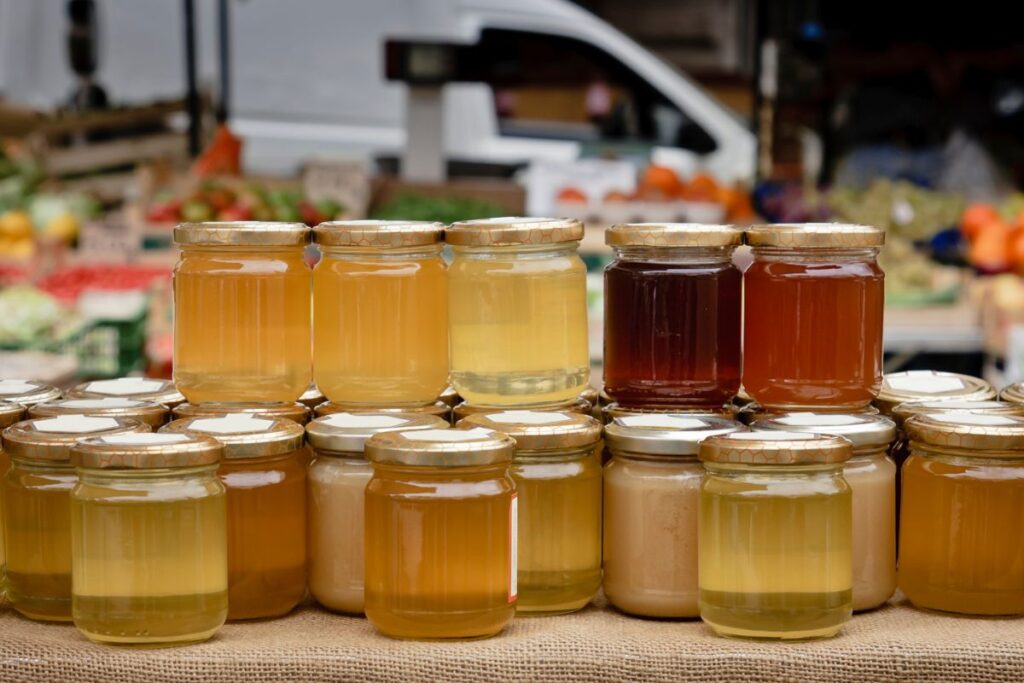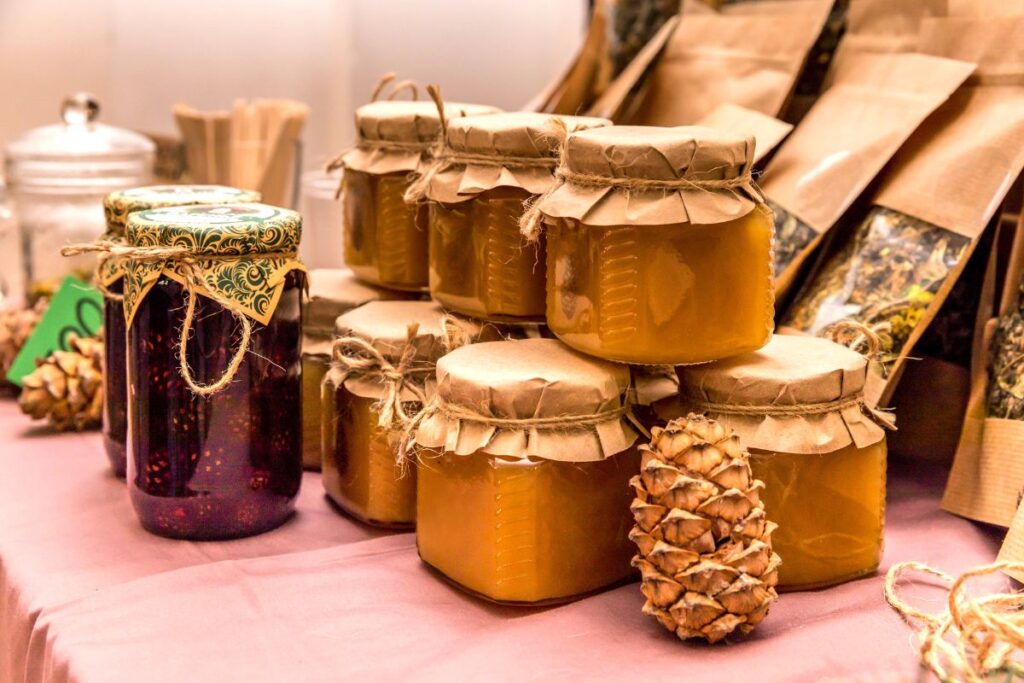If you’re a beekeeper who produces local honey, you may be looking for ways to increase your sales and revenue. Selling honey can be a profitable business, but it requires effective marketing strategies to attract and retain customers. In this blog post, we will discuss the strategies for marketing and selling your local honey.
1. Identify your target audience.
The first step in creating an effective marketing strategy for your local honey is to identify your target audience. Who are the people that are most likely to buy your honey? This could be people who live in your community, tourists visiting your area, health-conscious consumers, or people who are interested in supporting local businesses.
Once you have identified your target audience, you can tailor your marketing messages to appeal to their specific needs and interests. For example, if your target audience is health-conscious consumers, you might emphasize the natural and organic qualities of your honey.
Be careful to avoid the trap of saying “everyone” is your customer. Of course most people like honey, but you will not get anywhere trying to sell to every different type of customer. Narrow down to your perfect customer and start there. Curate your messaging to that particular customer about their needs and wants. A honey brand aimed at eco-conscious stay-at-home moms will have a different voice than a brand aimed at active adults with no kids. Trying to cater to both groups will cause your brand to have to be bland in it’s messaging at best, and be confused and ineffective at worst.
2. Establish your brand.
Next, you need to establish your brand. Your brand is the image that you present to the world, and it encompasses everything from your product packaging to your website and social media presence.
To establish your brand, start by creating a unique and memorable logo that reflects your business and your honey. You should also develop a brand voice that reflects your values and personality. For example, if you are passionate about sustainable beekeeping practices, your brand voice might emphasize your commitment to the environment.

3. Determine your pricing.
One of the most important factors in selling honey is determining your pricing. The price of your honey will be influenced by several factors, including the cost of production, the demand for your honey, and the prices of your competitors.
Before setting your prices, it’s important to conduct market research to understand the prices of other honey producers in your area. You should also factor in your costs of production, such as the cost of beekeeping supplies, packaging, and labor as well as creating enough margin in your retail pricing to support wholesale pricing. Once you have a good understanding of your costs and the prices of your competitors, you can set a price that is competitive and profitable.
4. Develop a distribution plan.
Your distribution plan will outline how you will get your honey into the hands of your customers. Will you sell your honey directly to consumers at local markets, through your website, or through a distributor?
If you plan to sell your honey directly to consumers, you may want to consider setting up a booth at local farmers’ markets or craft fairs. You could also sell your honey through your own website, using e-commerce platforms like Shopify or Etsy. If you plan to sell your honey through a distributor, you’ll need to research and contact potential distributors and negotiate the terms of the relationship.

5. Create effective packaging.
Packaging is an essential element of your marketing strategy, as it is the first thing that customers will see when they encounter your honey. Your packaging should be eye-catching, informative, and reflective of your brand.
Consider using clear jars that showcase the natural color of your honey, and include a label that highlights the unique qualities of your honey. For example, you might include information about the type of flowers the bees visited to make the honey or any special production practices you use.
6. Leverage social media.
Social media can be a powerful tool for marketing your local honey. Platforms like Facebook, Instagram, and Twitter allow you to reach a large audience of potential customers with relatively little cost.
To effectively use social media, create profiles for your business on the platforms where your target audience is most active. Then, regularly post updates, photos, and videos that showcase your honey and your brand. Consistent posting and engaging with your community is more important than posting perfect videos or photos. Consider the daily tasks you complete as things you can film and post. At a certain point, “Everything is content”. Beekeeping and honey producing are novel things for the regular public, so the ‘boring’ things you do every day may be incredibly interesting to your online community.
7. Get listed for FREE on My Honey Crate
The larger your online presence, the more likely you will come up in search results when people are searching for your products or services. We started My Honey Crate to help people find their local beekeepers like you. Basic listings in our directory are always free and allow you to have a link back to your website. If you don’t have a website, your My Honey Crate listing serves as your online home, complete with your contact info, a photo gallery and a place to tell your customers your story. People can even message you through My Honey Crate (without having your email out in the open). We take no commissions on any of the sales you generate thanks to your listing.
Search our Local Honey Directory and see if you already have a listing. If not, set one up today for FREE!
8. Participate in local events.
Another effective way to market your local honey is to participate in local events. This could include farmers’ markets, craft fairs, and food festivals. These events provide an opportunity to connect with potential customers and showcase your honey.
When participating in local events, be sure to have plenty of samples of your honey available for customers to try. You may also want to offer special deals or promotions to encourage people to try your honey and make a purchase. Additionally, make sure to have plenty of business cards or brochures on hand so customers can easily find you in the future.

9. Offer unique products.
To stand out from the competition, consider offering unique honey products that customers can’t find anywhere else. For example, you could infuse your honey with different flavors like lavender, cinnamon, or ginger. You could also offer honeycomb or beeswax candles made from your own beeswax.
Offering unique products can help you attract customers who are looking for something different or who want to try new things. It can also help you differentiate yourself from other local honey producers.

10. Build relationships with customers.
Finally, it’s important to build relationships with your customers. Repeat customers are more likely to make purchases in the future and to recommend your honey to their friends and family.
To build relationships with your customers, consider offering a loyalty program or special discounts for repeat customers. You could also send out newsletters or updates to keep customers informed about new products or promotions.
Additionally, make an effort to engage with your customers and respond to their questions or feedback. Social media is a great way to connect with customers and respond to their inquiries or comments.
In conclusion, marketing and selling your local honey requires a combination of effective branding, pricing, distribution, and promotion. By identifying your target audience, developing a strong brand, determining your pricing, creating effective packaging, leveraging social media, participating in local events, offering unique products, and building relationships with your customers, you can increase your sales and revenue and grow your local honey business.
